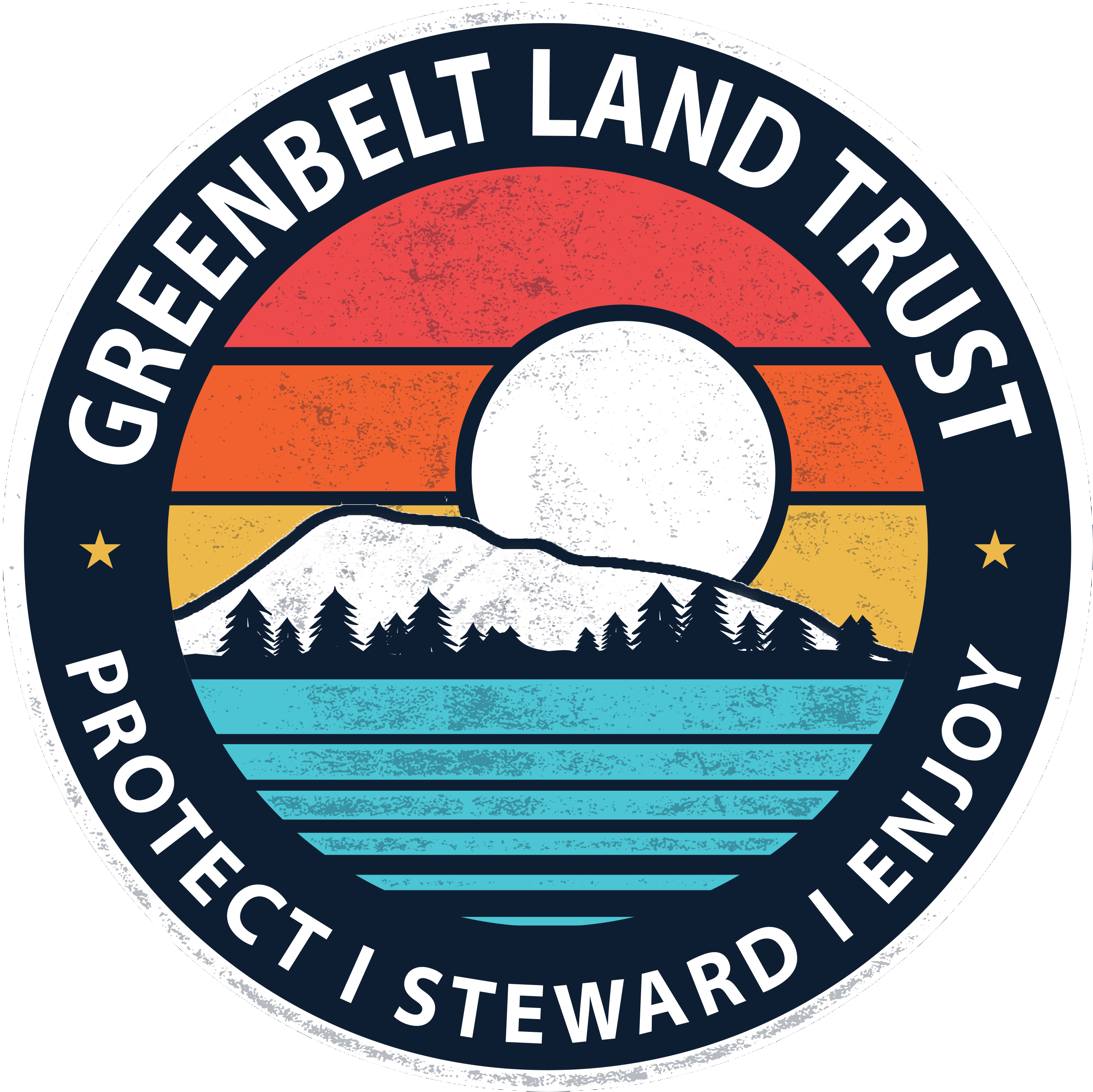
A Conservation Legacy at Oak Basin
428 acres of diverse forest and prairie habitat in the Coburg Hills.

A conservation legacy protected forever
Jim and Ed Merzenich began acquiring the pieces of what would eventually become Oak Basin Tree Farm in 1993, with the goal of leaving a legacy for their families. They saw a place for the family to grow and recreate, and for Jim, a longtime professional forester, to practice his vision of sustainable, climate-forward forestry and land management.

Jim Merzenich at Oak Basin Tree Farm
On the 933 acres they assembled in the Coburg Hills, they found another legacy they could leave: a mosaic of high elevation oak and prairie habitats containing a key population of the then-endangered Fender’s blue butterfly , its host plant Kincaid’s lupine, and dozens of other imperiled oak and prairie plant and animal species. Jim’s work to restock and rehabilitate the cut-over timber stands on the property proceeded along with work on the ground and in local conservation partnerships to restore the ecological treasures on the land.
The Merzenichs have been active members of the Willamette Valley conservation community since establishing the tree farm, building strategic partnership with multiple federal agencies and conservation nonprofits, performing oak release projects and prescribed burns, and tackling invasive species across the property.

A male Fender's blue butterfly on Kincaid's lipine.
A Haven for Fender's Blue
The ridges of the Coburg Hills contain the only higher-elevation populations of Fender’s blue butterfly. These populations are particularly important for the long-term survival of the species because they contain genetic diversity that may allow the species to adapt or move to higher elevations as the climate changes.
The Oak Basin prairie habitat is connected to a Bureau of Land Management (BLM) “Area of Critical Concern” prairie that is managed for Fender’s blue and Kincaid’s lupine. Habitats and wildlife don’t know property boundaries, so the Merzenichs and the BLM agreed to manage their prairies as one piece in order to maximize habitat connectivity for these critical and threatened species.
Kincaid's lupine, Balsamroot, Camas lily, and a sunset at Oak Basin.
Habitat and Working Lands
For the Merzenichs, placing a conservation easement on the rare habitat that they steward is a way to ensure that the conservation legacy of their property is protected beyond their lifetimes and into perpetuity. After several years of partnership and careful consideration by the Merzenichs and Greenbelt Land Trust, the boundaries of a conservation easement were drawn on 428 acres of two non-contiguous parcels of the best prairie and oak habitat, where land management will be for habitat exclusively.
Oak Basin Tree Farm is a working landscape, and the easement was designed to ensure that sustainable timber management and commercial timber operations could continue outside of the easement, while maximizing habitat protection within the boundaries.
Oak Basin and the Coburg Hills contain some of the best remaining oak habitat on the east side of the Willamette Valley.
Jim Merzenich at the easement boundary.
"Oak Basin Tree Farm is a living laboratory to demonstrate responsible stewardship. Tree farms can be managed to improve habitat while returning benefits to the landowner. I think conservation of rare habitat is the best use of the land and it pays in the long term. In 100 years, well-managed properties in conservation easements will be treasured." --Jim Merzenich
Multiple priority wildlife species for the Oregon Conservation Strategy call Oak Basin home, and its elevation and topographical diversity are vital for wildlife travel corridors and future climate resilience. The property drains into two watersheds and is a prominent feature of the local viewshed with a highly visible location along I-5 and for the community of Coburg.
Conservation in the Coburg Hills
Conservation of this property adds to a large complex of nearby existing protected lands with high conservation values in the Coburg Hills, including parcels conserved by the BLM, Confederated Tribes of Siletz Indians, McKenzie River Trust, The Nature Conservancy, and the Natural Resource Conservation Service. Greenbelt Land Trust’s Courtney Creek outside of Brownsville is 2 miles to the north and CBow Ridge is further south in the Coburg Hills.
The Merzenichs and Oak Basin are a shining example of the importance of private landowners commitment to conservation in the Willamette Valley and the power of conservation easements to protect ecological values on private lands.
Conservation Funding
Funding for the acquisition was provided by the Willamette Wildlife Mitigation Program (WWMP), administered by the Oregon Department of Fish and Wildlife. The WWMP is a major source of funding for conservation in the Willamette Valley. In 2010, the Bonneville Power Administration (BPA) and the State of Oregon signed an agreement to mitigate the effects of dam construction on the Willamette River, and provide for the implementation of a long-term account to fund habitat maintenance for the program when the agreement expires.
The agreement established goals for mitigating the effects of the construction, inundation, and operation of the Willamette River Basin Flood Control Projects in the Willamette Valley. Under the terms of the agreement, Oregon and the BPA agreed to acquire at least an additional 16,880 acres of wildlife mitigation property to protect 26,537 acres (or more) by the end of 2025. Funding for the program comes from BPA’s electric ratepayers.
Public Access
Access to Oak Basin is limited to Greenbelt Land Trust tours and events at this time. There is no public access. Stay up to date with current tours and events HERE .
Oak Basin prairie and forest on a ridge in the Coburg Hills.
.